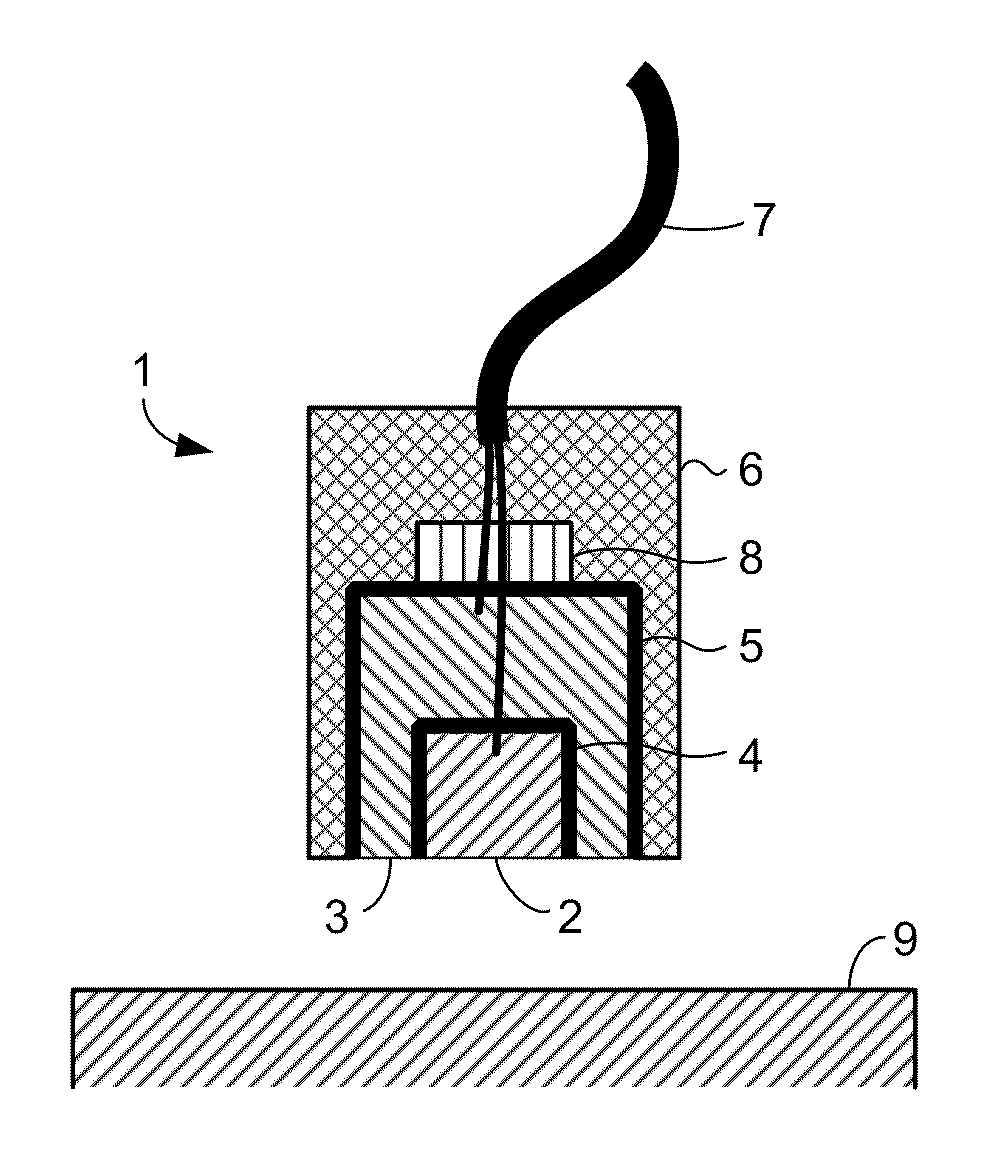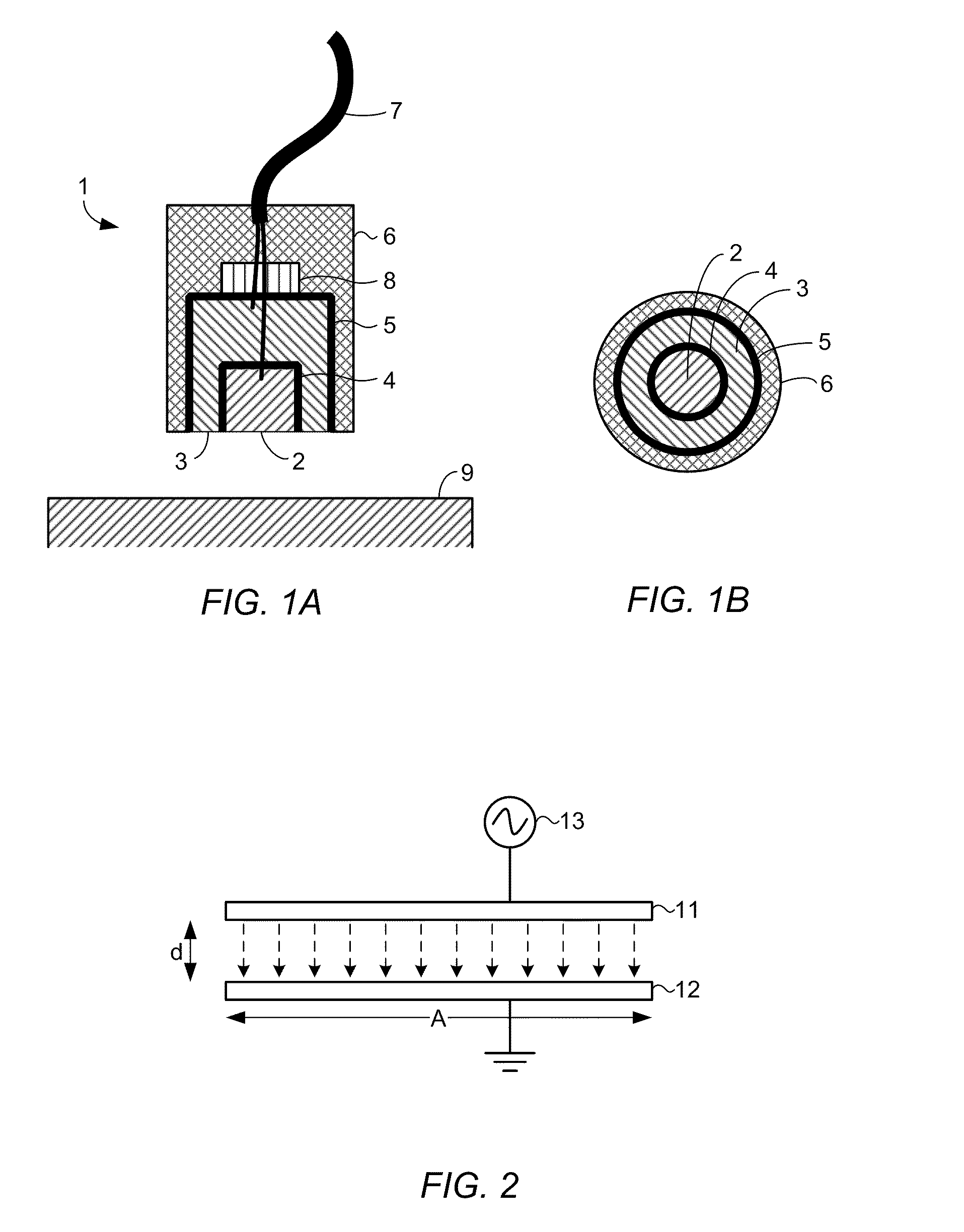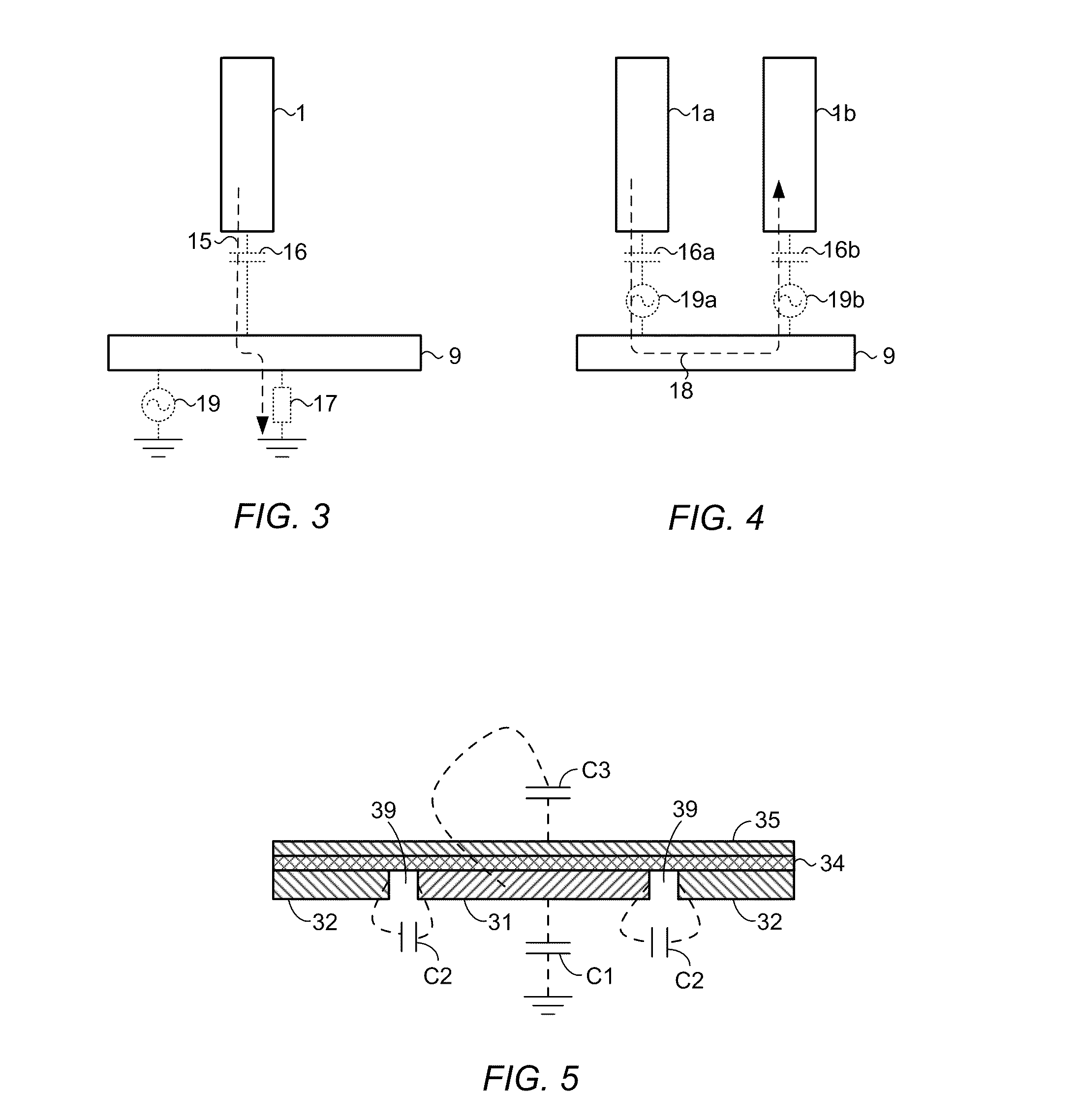Integrated sensor system
a sensor system and integrated technology, applied in the direction of converting sensor output, using electrical/magnetic means, instruments, etc., can solve the problems of introducing errors due to variation, and affecting the accuracy of measurement results
- Summary
- Abstract
- Description
- Claims
- Application Information
AI Technical Summary
Benefits of technology
Problems solved by technology
Method used
Image
Examples
Embodiment Construction
[0062]The following is a description of various embodiments of the invention, given by way of example only and with reference to the drawings.
Theory of Capacitive Sensors
[0063]A capacitive sensor uses a homogeneous electric field set up between two conductive surfaces. Over short distances, the applied voltage is proportional to the distance between the surfaces. Single-plate sensors measure the distance between a single sensor plate and an electrically conductive target surface.
[0064]FIG. 2 shows a parallel plate electrode arrangement. The capacitance between the two electrodes 11, 12 is given by the charge induced on one of the electrodes due to a potential difference between the two electrodes, divided by the potential difference, as represented in equation (1),
C=QΔV.(1)
[0065]The two parallel electrodes are separated by a distance d. Capacitance between the two electrodes is given by equation (2), neglecting the effects of field bending and non-homogeneity of the dielectric,
C=ɛ0ɛ...
PUM
 Login to View More
Login to View More Abstract
Description
Claims
Application Information
 Login to View More
Login to View More - R&D
- Intellectual Property
- Life Sciences
- Materials
- Tech Scout
- Unparalleled Data Quality
- Higher Quality Content
- 60% Fewer Hallucinations
Browse by: Latest US Patents, China's latest patents, Technical Efficacy Thesaurus, Application Domain, Technology Topic, Popular Technical Reports.
© 2025 PatSnap. All rights reserved.Legal|Privacy policy|Modern Slavery Act Transparency Statement|Sitemap|About US| Contact US: help@patsnap.com



